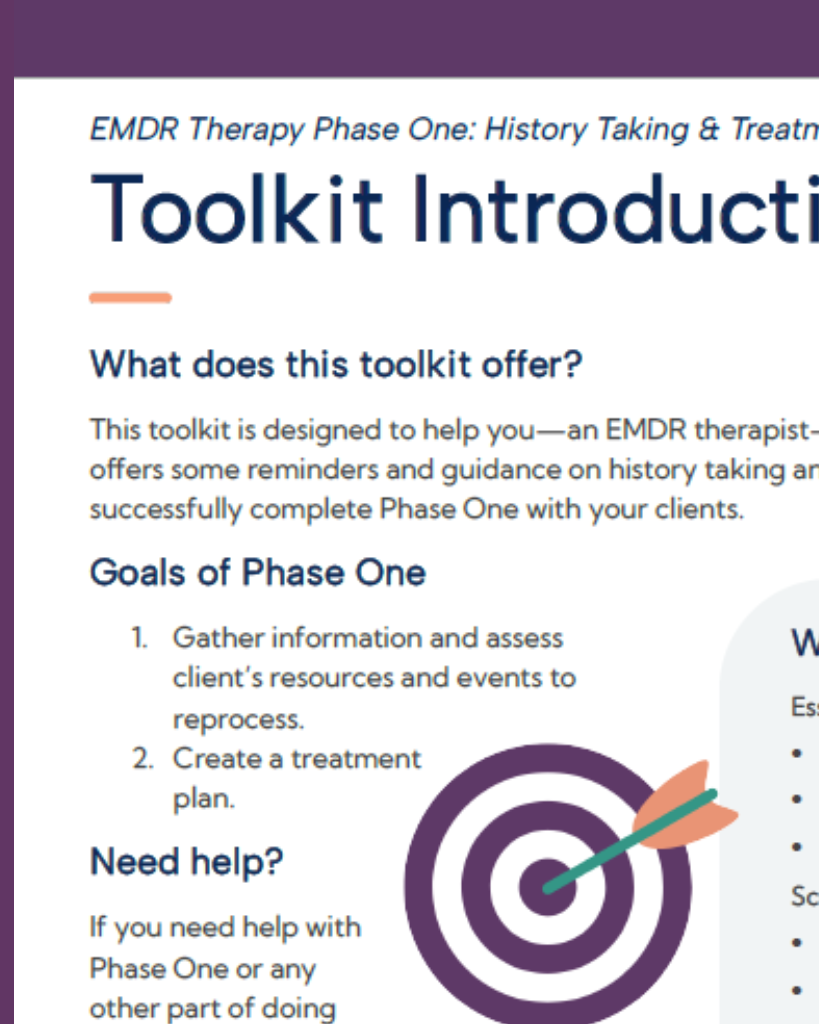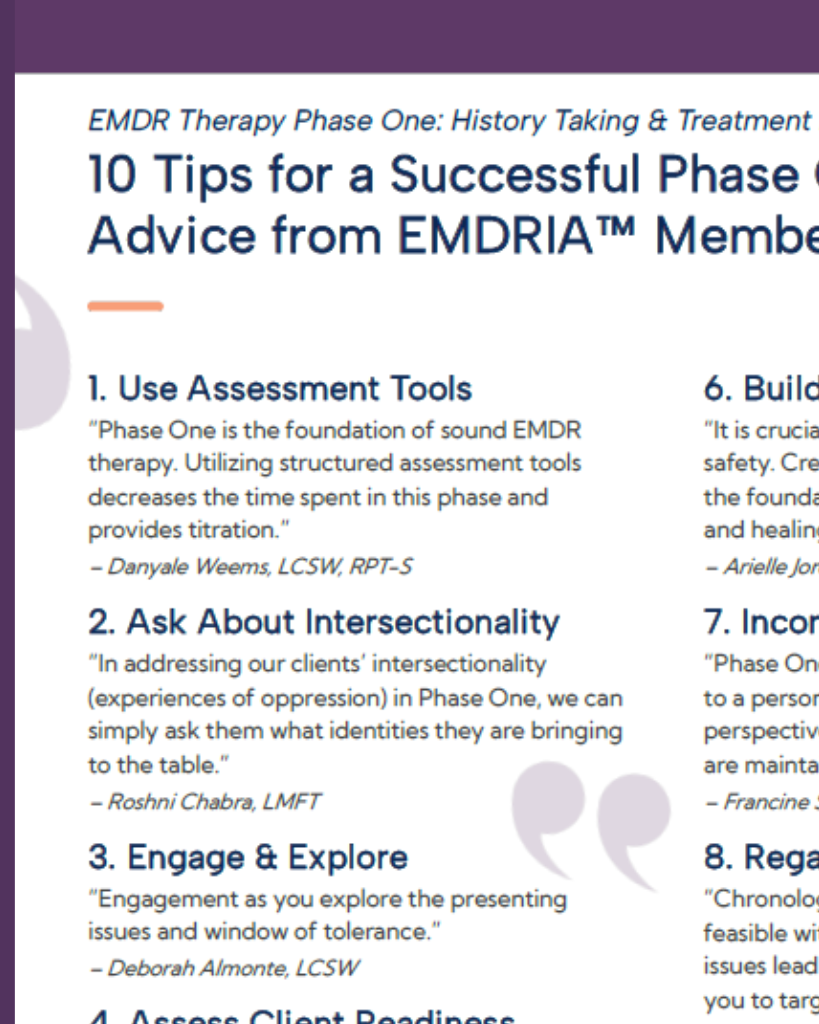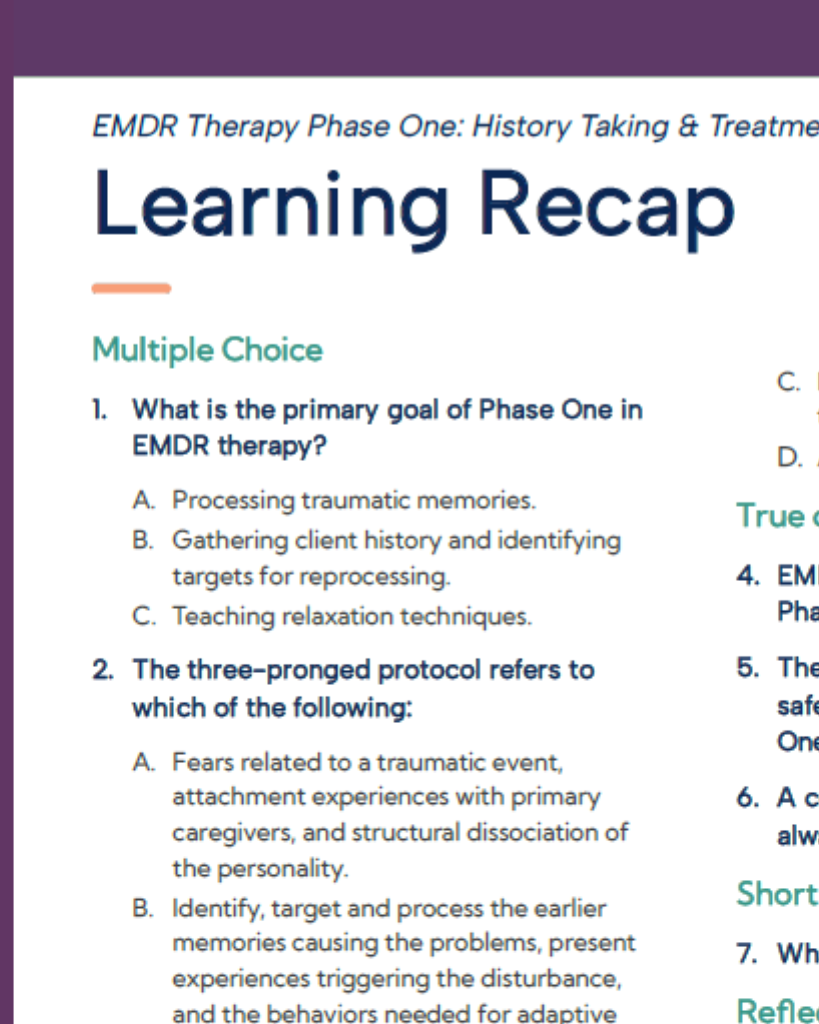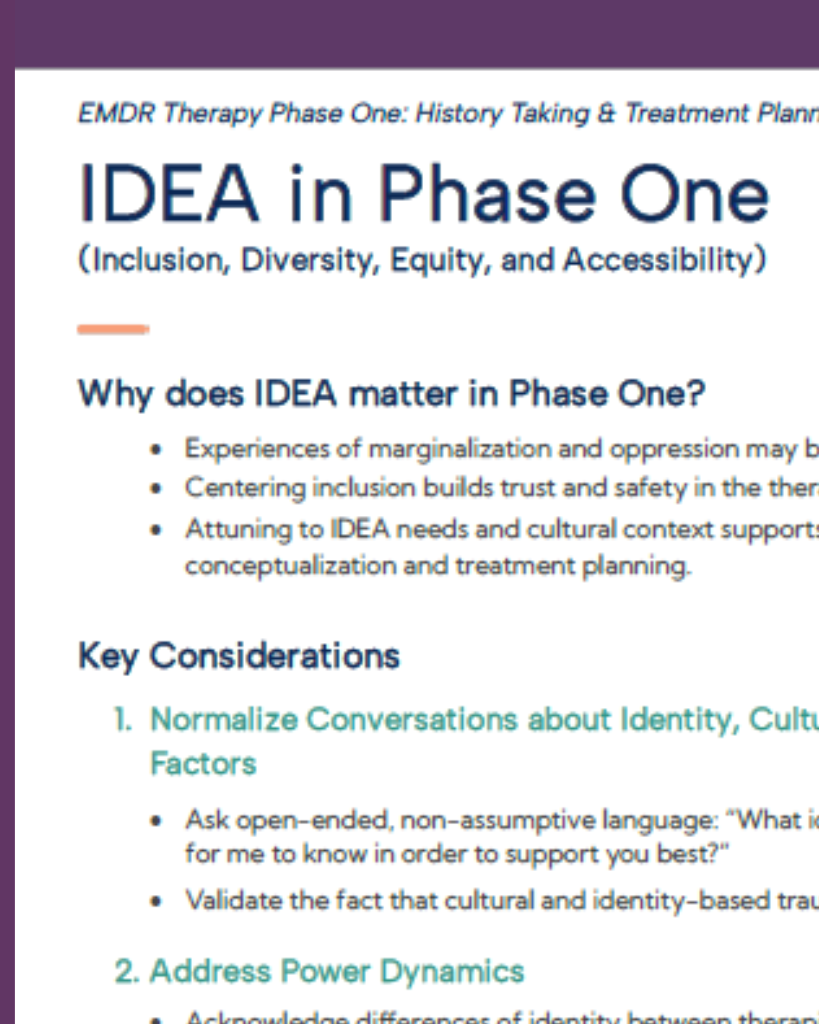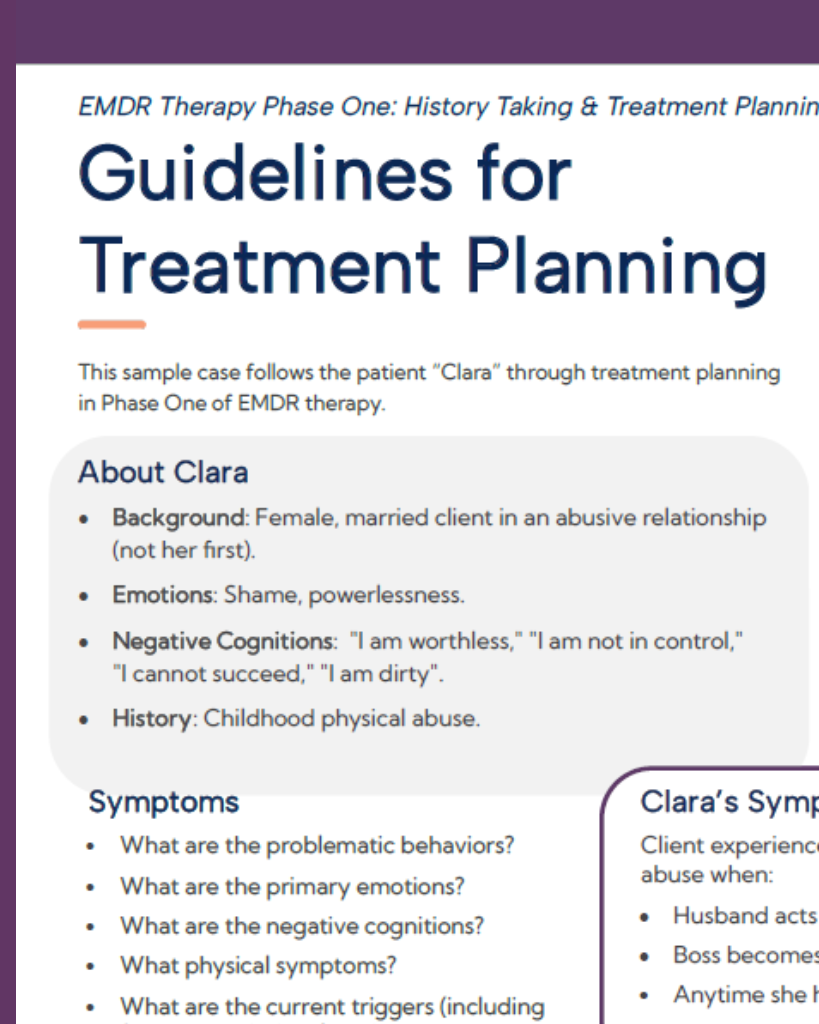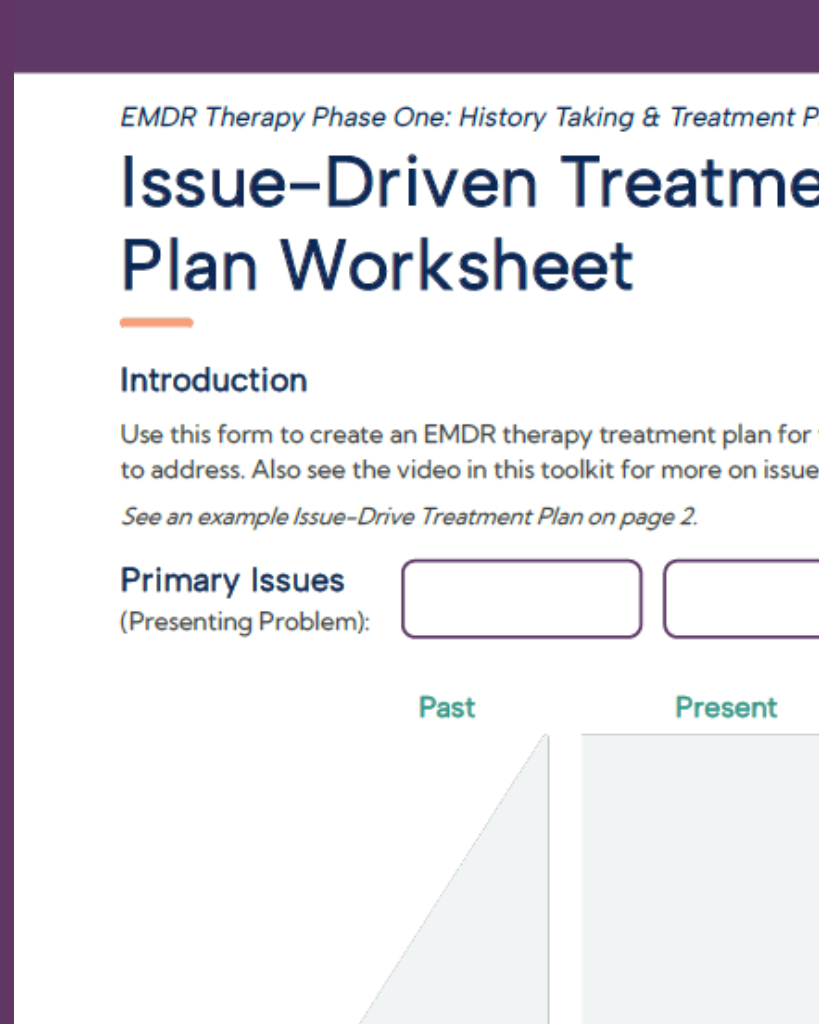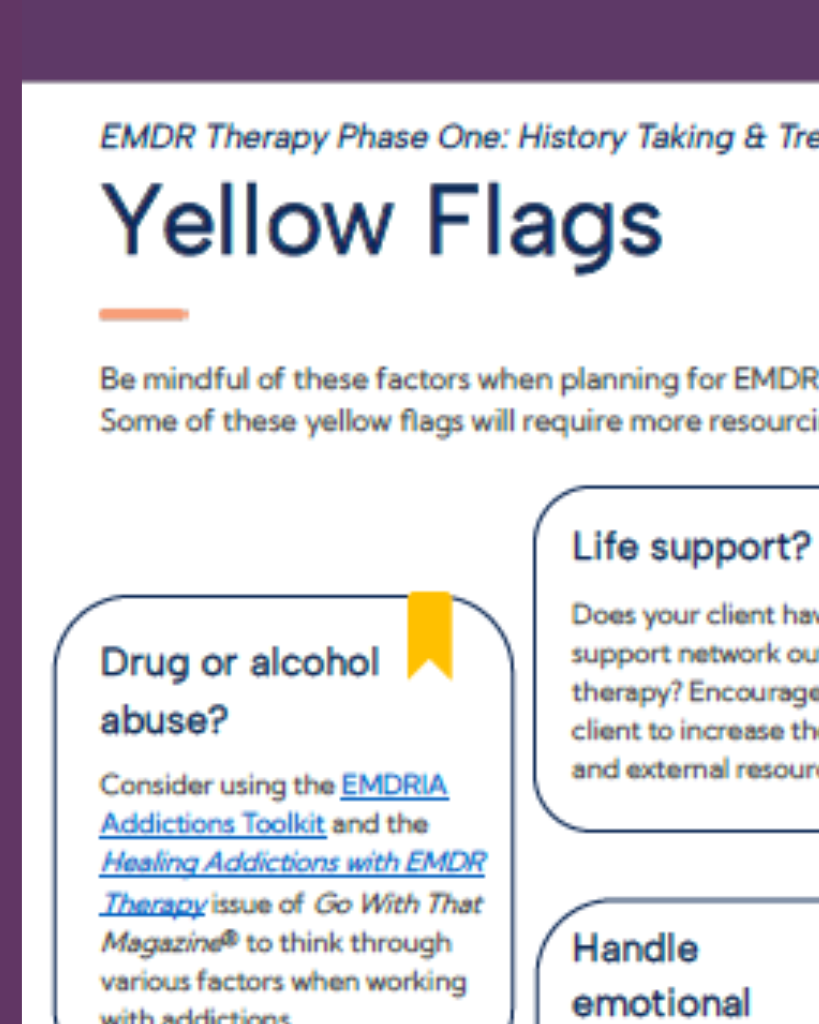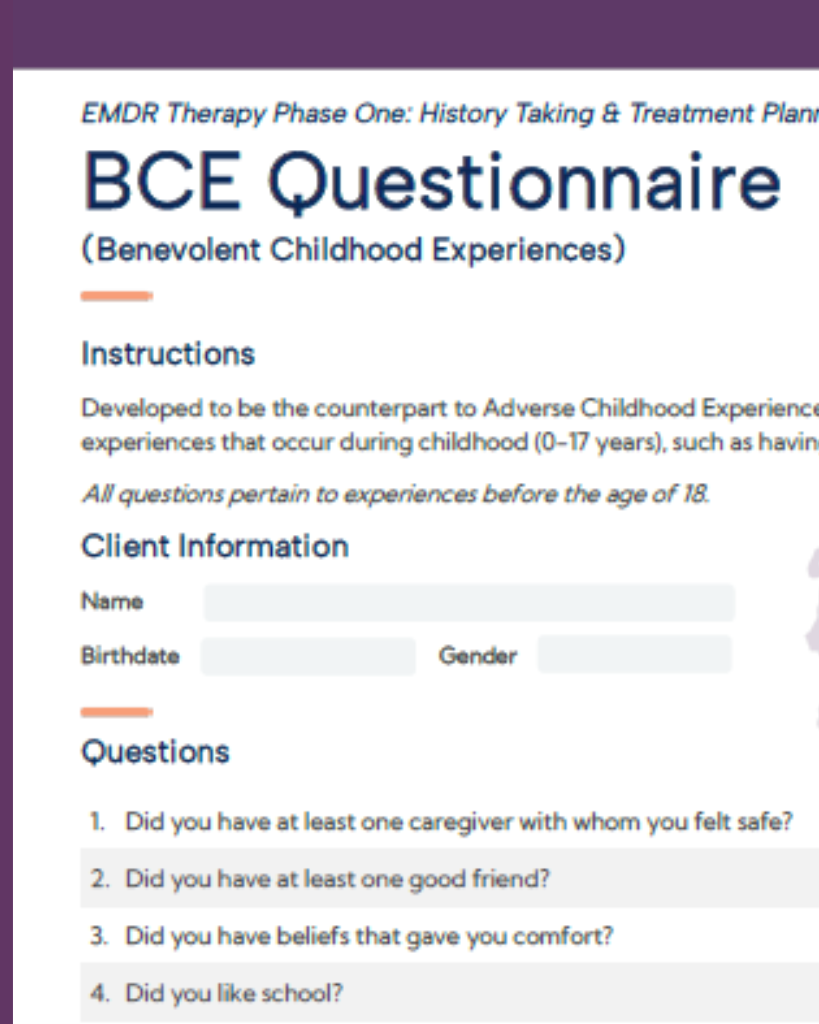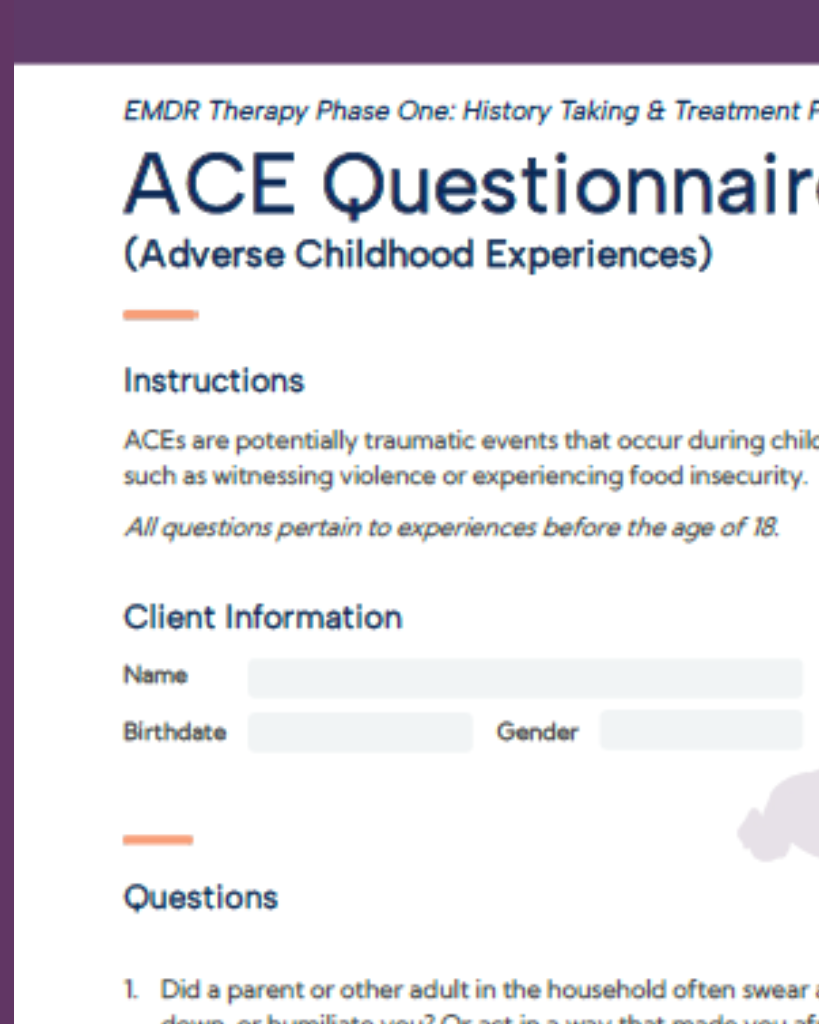
Tap Into It collection
Discover professionally curated content such as:
- Practice resources (toolkits, infographics, videos)
- Treatment guidelines
- Research articles (Journal of EMDR Practice and Research, and links to other publications)
Includes a mix of open access, members-only, and links to external content.
Or, search the full EMDRIA Library.
Search the Tap Into It Collection
Full Packet (Phase 1 Toolkit)
A toolkit designed to help EMDR therapists gather comprehensive client information and assess readiness for EMDR treatment.
10 Tips for a Successful Phase One (Phase 1 Toolkit)
Top phase one EMDR therapy tips such as assess client readiness, create a timeline, build a therapeutic alliance, ask about intersectionality.
Challenges (Phase 1 Toolkit)
Here are some common challenges that you might face during Phase One and some ideas of how to handle them.
Learning Recap (Phase 1 Toolkit)
Wrap up with a recap of essential concepts and tools to reinforce learning and help you confidently move forward into Phase Two.
IDEA in Phase One (Phase 1 Toolkit)
Attuning to IDEA needs and cultural context supports more accurate case conceptualization and treatment planning.
Guidelines for Treatment Planning (Phase 1 Toolkit)
This sample case follows the patient “Clara” through treatment planning in Phase One of EMDR therapy.
Issue-Driven Treatment Plan Worksheet (Phase 1 Toolkit)
Use this form to create an EMDR therapy treatment plan for the issues the client is hoping to address. Also see the video in this toolkit.
Yellow Flags (Phase 1 Toolkit)
Factors to keep an eye out for when planning for EMDR therapy with a client. Some require more resourcing or preparation before reprocessing.
BCE Questionnaire (Benevolent Childhood Experiences) (Phase 1 Toolkit)
BCEs are favorable experiences that occur during childhood (0-17 years), such as having social support and security.
ACE Questionnaire (Adverse Childhood Experiences) (Phase 1 Toolkit)
ACEs are potentially traumatic events that occur during childhood (0-17 years), such as witnessing violence or experiencing food insecurity.

